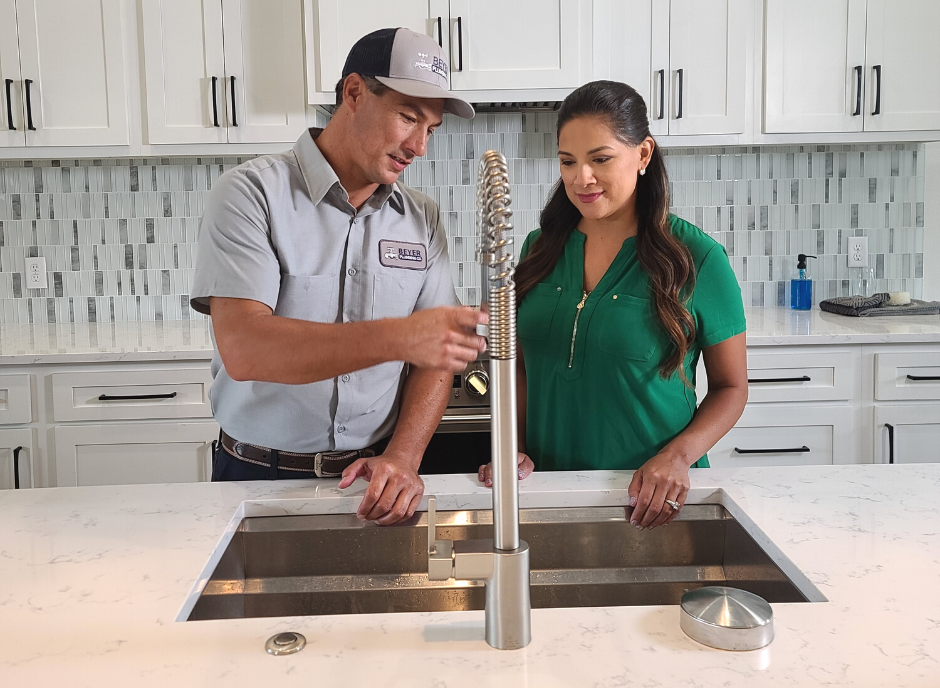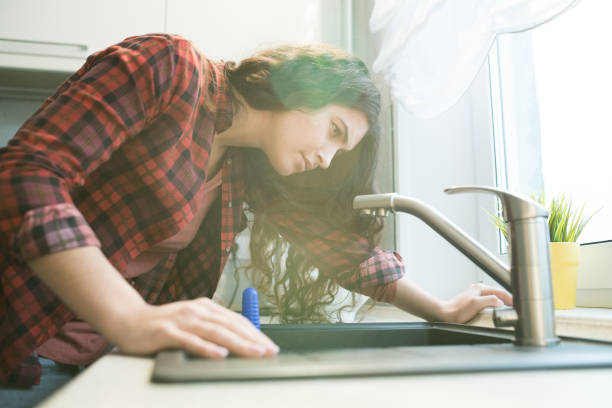Learning the Importance of Resolving a Broken Faucet
Learning the Importance of Resolving a Broken Faucet
Blog Article
We've encountered this post on Why Are My Faucets Dripping (And Can I Fix It Myself)? listed below on the net and accepted it made good sense to discuss it with you on my blog.

Trickling faucets may seem like a minor aggravation, but their effect surpasses simply the inconvenience of the noise. From drainage to sustaining unnecessary economic costs and health dangers, neglecting a trickling tap can lead to various effects. In this post, we'll explore why it's critical to resolve this usual house concern quickly and successfully.
Waste of Water
Environmental Impact
Dripping faucets add dramatically to water wastefulness. According to the Epa (EPA), a single faucet trickling at one drip per secondly can squander greater than 3,000 gallons of water annually. This not only pressures water resources but additionally impacts communities and wild animals based on them.
Financial Costs
Raised Water Expenses
Past the ecological impact, trickling faucets can blow up water expenses considerably. The built up wastefulness in time converts into greater energy costs, which can have been prevented with prompt repair work.
Possible Building Damages
Moreover, prolonged dripping can lead to harm to fixtures and surfaces bordering the faucet. Water buildup can cause staining, deterioration, and even structural concerns if left unattended, leading to added repair service costs.
Wellness Worries
Mold And Mildew and Mildew Development
The constant existence of dampness from a dripping faucet produces a perfect atmosphere for mold and mildew and mold growth. These fungi not only jeopardize interior air top quality yet likewise posture health risks, especially for individuals with breathing problems or allergies.
Waterborne Illness
Stagnant water in trickling taps can come to be a breeding place for microorganisms and various other microorganisms, enhancing the risk of waterborne diseases. Impurities such as Legionella microorganisms prosper in stationary water, potentially causing serious health problems when consumed or inhaled.
Do it yourself vs. Professional Repair work
Pros and Cons of DIY Fixing
While some might attempt to take care of a trickling tap themselves, do it yourself repairs come with their own collection of obstacles. Without correct knowledge and tools, DIY attempts can intensify the problem or cause insufficient fixings, extending the issue.
Benefits of Employing an Expert Plumber
Employing a professional plumber guarantees that the underlying reason for the dripping tap is resolved properly. Plumbing professionals have the competence and devices to diagnose and repair tap problems successfully, conserving time and minimizing the risk of more damages.
Step-by-Step Guide to Taking Care Of a Dripping Tap
Devices Needed
Prior to attempting to fix a trickling faucet, collect the necessary tools, consisting of a flexible wrench, screwdrivers, substitute parts (such as washing machines or cartridges), and plumber's tape.
Usual Faucet Issues and Their Solutions
Determine the type of tap and the specific issue triggering the drip. Usual issues include worn-out washing machines, corroded valve seats, or damaged O-rings. Refer to producer guidelines or on-line tutorials for step-by-step advice on repair work.
Safety nets
Normal Maintenance Tips
To avoid leaking faucets, perform routine maintenance such as cleaning aerators, checking for leakages, and changing damaged components without delay. In addition, take into consideration installing water-saving devices or updating to a lot more reliable components.
Value of Prompt Repair Works
Attending to leaking faucets as quickly as they're observed stops additional water wastage and possible damage, inevitably saving both water and money in the future.
Effect On Home Value
Understanding of Well-Maintained Home
Keeping a property in good condition, consisting of addressing upkeep issues like trickling taps, improves its regarded worth and value amongst possible buyers or renters.
Impact on Resale Worth
Characteristics with properly maintained plumbing fixtures, consisting of taps, command greater resale worths in the property market. Attending to dripping faucets can add to a favorable impact during residential property examinations and negotiations.
Environmental Responsibility
Individual Contribution to Conservation
Taking responsibility for repairing leaking taps lines up with wider efforts toward water conservation and ecological sustainability. Every person's activities collectively make a substantial influence on protecting valuable resources.
Sustainable Living Practices
By focusing on prompt fixings and adopting water-saving behaviors, individuals add to lasting living practices that benefit both existing and future generations.
Conclusion
Attending to a trickling tap goes beyond simple comfort; it's an essential step towards conserving water, minimizing financial expenses, and safeguarding health and wellness and residential or commercial property. Whether via DIY repair services or specialist aid, taking action to take care of trickling taps is a small yet impactful method to advertise liable stewardship of resources and contribute to a healthier, a lot more lasting future.
How to Fix a Leaky Faucet: Step-by-Step Repair Guide
A leaky faucet may seem like a simple annoyance, but if it's not fixed promptly, that leak could cost hundreds to potentially thousands. From water damage to mold, mildew, and high water bills, even a tiny leak can be catastrophic if left unattended. Damage like this can even affect the overall value of your home, so it's important to take the right approach for leaky faucet repair. You may need the help of a plumber in some cases, but we've got a few tips you can try on how to fix a leaky faucet before calling the pros.
Four Faucet Types
When you're learning how to fix a leaky faucet, the first step is knowing what kind of faucet you're working with! There are four common types.
Cartridge Faucets
Cartridge faucets come in one- or two-handled varieties. In one-handled cartridge faucets, hot and cold water combines in a single cartridge. In the two-handled versions, hot and cold water are controlled separately and mixed in the faucet.
Ball Faucets
Ball faucets have a single lever you push up and down to adjust the pressure and rotate to change the temperature. A slotted metal ball controls the amount of water allowed into the spout.
Compression Washer Faucets
They're the oldest type of faucet, but they're still used in many homes — especially older ones. Compression faucets have two separate handles that, when turned, raise or lower the washer that seals a water valve. This valve stops water from flowing through the faucet when it is turned off.
Disc Faucets
Disc faucets rarely need to be repaired due to their maintenance-free design. The water flow is controlled by two discs — the upper one raises and lowers against a fixed lower disc, creating a watertight seal. If your disc faucet starts leaking, you may need to replace the seals or clean residue buildup from the inlets.
Fixing a Leaky Faucet
Step 1: Turn Off the Water
Whether you're learning how to fix a leaky bathtub faucet or how to fix a leaky kitchen faucet, always turn off the water supply to your working area when you're fixing a leak. The last thing you want is a flood added to your list of things to fix.
Look for the shutoff valves below your sink or around the tub and turn them clockwise to stop the water flow. If your faucet doesn't have shutoff valves, you may need to turn off the water for the whole house. Check to make sure it's off by turning the faucet on. If nothing comes out, you're ready to start the repair.
Step 2: Take Apart the Faucet
How you disassemble your faucet depends on the type of fixture you have. You can use a flathead screwdriver to remove the caps on top of the handle or handles for cartridge and compression faucets. Inside, you should see handle screws. Unscrew these with a screwdriver to remove the handle.
Disc- and ball-style faucets will typically have an inlet screw near the handle, and removing that will reveal the interior of the faucet.
Detach the Valve Stem
For cartridge- and compression-style faucets, you'll see the inner valve stem or cartridge once you remove the faucet handles. If you have a compression faucet, unscrew the brass valve stem. If you have a cartridge faucet, pull out the cartridge. If your cartridge has been in place for a while, it may require some tools or extra force to remove it due to mineral deposits.
Examine and Replace Parts
Once you've removed the parts, check them out to confirm what needs to be replaced. You may see corroded rubber washers, O-rings, stems, or cartridges. On a ball-style faucet, check the seats and springs for damage.
If you need to repair a leaky disc faucet, check the inlet and seals on the lower disc.
Once you determine what parts must be replaced, visit your local hardware store. Bring the damaged parts with you to ensure you can purchase the correct components to replace them.
Clean Valves and Faucet Cavity
If you've removed a stem or cartridge, you may notice mineral buildup in the faucet's threads. Use white vinegar to clean the valve seat by soaking it for a few minutes, then scrub it away with a soft toothbrush and rinse with warm water. You can also clean the interior of the faucet in the same way.
Reassemble the Faucet
Once your faucet is cleaned and the required parts have been replaced, it's time to reassemble it. Put the pieces back together and slowly turn the water supply back on. Doing this slowly is crucial because too much initial water pressure can damage the new hardware you've just installed.
https://homewarranty.firstam.com/blog/how-to-fix-leaky-faucet

I'm very eager about and I really hope you liked the new page. So long as you enjoyed our article please be sure to pass it around. I am grateful for your time. Revisit us soon.
Report this page